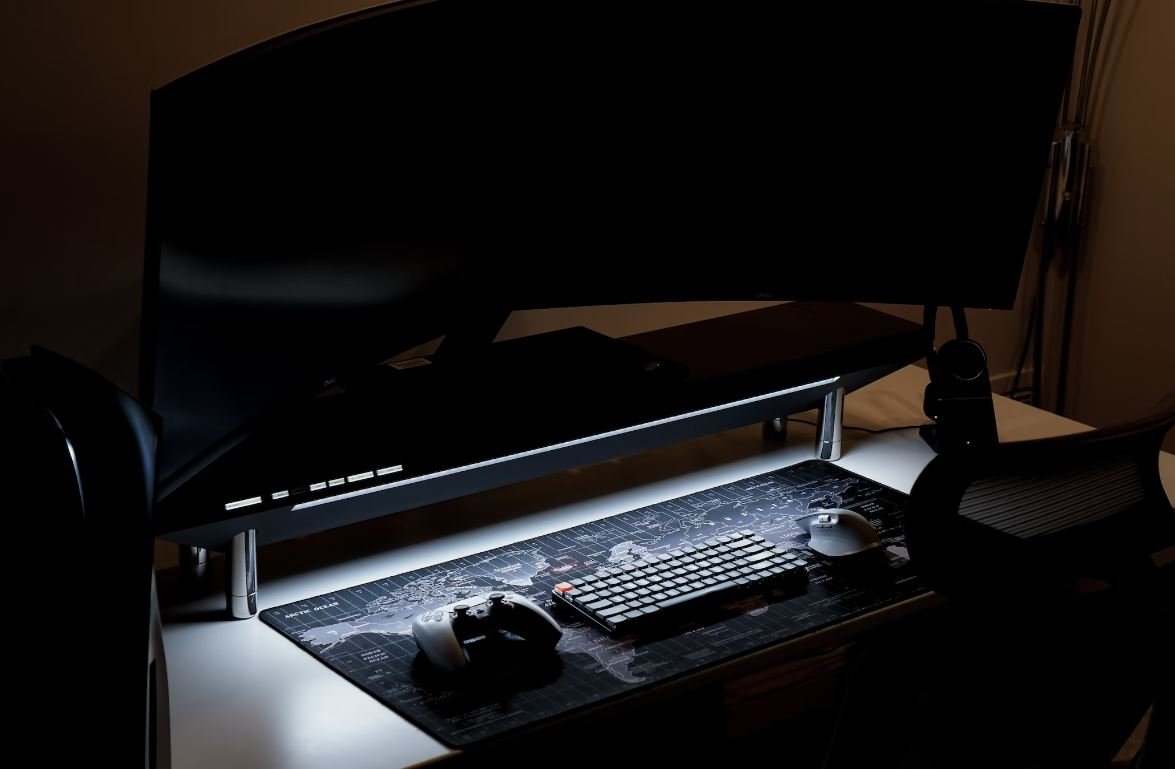How to Do an Application Letter
Writing an effective application letter is crucial when applying for a job or seeking admission to a school. It’s your opportunity to highlight your qualifications and convince the reader that you are the best candidate for the position or program. In this article, we will provide you with a step-by-step guide on how to write an impressive application letter.
Key Takeaways:
- Learn the purpose and structure of an application letter.
- Gather the necessary information and research the recipient.
- Follow a clear and concise writing style.
- Showcase your skills, experiences, and accomplishments.
- Proofread and edit your letter carefully before sending it.
Understanding the Application Letter
An application letter, also known as a cover letter, is a formal letter that accompanies your resume or curriculum vitae. Its purpose is to introduce yourself to the reader and explain why you are the perfect fit for the job or program you are applying to. A well-written application letter can significantly increase your chances of getting an interview or acceptance.
Remember, your application letter is your first impression, so make it count!
Steps to Write an Application Letter
1. Research and Gather Information
- Understand the requirements and expectations of the position or program you are applying for.
- Research the company or institution to tailor your letter accordingly.
- Find out the name and position of the person who will receive your letter.
Gaining knowledge about the recipient and their organization shows your genuine interest and dedication.
2. Format Your Letter Properly
Follow a professional format with your contact information, the recipient’s contact information, a salutation, an introduction, body paragraphs, and a closing:
- Contact Information: Include your name, address, phone number, and email address at the top of the letter.
- Recipient’s Contact Information: Include the recipient’s name, job title, company/institution name, and address below your contact information.
- Salutation: Address the recipient by their name (e.g., “Dear Mr. Smith” or “Dear Dr. Johnson”).
- Introduction: State the purpose of your letter and mention the position or program you are applying for.
- Body Paragraphs: Highlight your relevant skills, experiences, and achievements that make you a strong candidate.
- Closing: End the letter with a polite closing, such as “Sincerely” or “Best regards,” followed by your full name and signature.
Formatting your letter properly ensures a professional and organized presentation.
3. Showcase Your Qualifications
Use the body paragraphs of your application letter to emphasize your qualifications:
| Skills | Experiences | Achievements |
|---|---|---|
| Communication | Internship at XYZ Company | Award for Employee of the Month |
| Leadership | Volunteer at ABC Organization | Successful completion of a team project |
Using tables allows you to present your qualifications in a clear and organized manner.
4. Proofread and Edit Your Letter
- Check for any grammatical or spelling errors.
- Ensure the letter flows logically and is cohesive.
- Double-check the accuracy of the recipient’s information.
- Ask a trusted friend or colleague to review your letter for feedback.
Proofreading and editing is essential to ensure a polished and error-free application letter.
Example Application Letter
Here is an example application letter to give you a better understanding of how to structure and write your own:
| Date | March 1, 2022 |
|---|---|
| Contact Information |
John Doe 123 Main Street City, State, Zip (123) 456-7890 johndoe@email.com |
| Recipient’s Contact Information |
Jane Smith HR Manager ABC Company 456 Oak Avenue City, State, Zip |
Dear Ms. Smith,
I am writing to apply for the position of Marketing Coordinator at ABC Company, as advertised on your website. With a Bachelor’s degree in Marketing and three years of experience in digital marketing, I believe I possess the skills and expertise needed for this role.
In my previous role as a Digital Marketing Specialist at XYZ Company, I successfully implemented various marketing campaigns that resulted in a 20% increase in website traffic and a 15% increase in lead generation. I am confident that my strong analytical, strategic thinking, and communication skills make me an ideal candidate for this position.
I would welcome the opportunity to discuss how my qualifications align with the goals of ABC Company. Thank you for considering my application. I look forward to the possibility of meeting with you to further discuss my candidacy.
Sincerely,
John Doe
Final Thoughts
Writing an effective application letter requires careful planning, research, and attention to detail. By following the steps outlined in this article and tailoring your letter to the specific position or program, you can create a compelling and persuasive application letter that increases your chances of success.
Remember, your application letter is your opportunity to make a strong first impression, so put in the effort to make it stand out.

Common Misconceptions
Paragraph 1: Application Letter Length
Many people believe that a lengthy application letter is more impressive and increases their chances of getting hired. However, this is not true.
- A short, concise application letter is more likely to grab the attention of the hiring manager.
- Long letters may come across as rambling and overwhelm the reader.
- Employers often have limited time to review applications and appreciate letters that get to the point.
Paragraph 2: Overuse of Clichés and Buzzwords
Contrary to popular belief, filling an application letter with clichés and buzzwords does not make it more appealing.
- Employers receive countless applications using the same overused phrases, which can make your letter blend in and seem generic.
- Using specific examples and showcasing your unique skills and experiences is more effective in capturing attention.
- Try to be authentic and use language that reflects your personal style and genuine enthusiasm for the position.
Paragraph 3: Formatting and Font Choices
Some people think that using fancy fonts and elaborate formatting will make their application letter stand out. Unfortunately, this can often have the opposite effect.
- Simple and professional fonts, such as Arial or Times New Roman, are easier to read and make your letter look more polished.
- Excessive use of bold, italics, or underlines can distract the hiring manager from the actual content of your letter.
- A clean and well-organized format, with proper headings and paragraphs, helps the reader navigate through your letter more easily.
Paragraph 4: Generic Letters for Different Positions
One common misconception is that a generic application letter can be used for multiple job positions. However, this approach is often ineffective.
- Each job has specific requirements and responsibilities. Tailoring your letter to highlight relevant skills and experiences will make a stronger impression.
- Generic letters may not address the specific needs of the employer, suggesting a lack of effort and interest.
- Researching the company and position before writing your letter allows you to customize it to match their specific needs and demonstrate your dedication.
Paragraph 5: One-Size-Fits-All Approach
It is a common misconception to assume that a one-size-fits-all application letter is suitable for every job application. However, this often leads to missed opportunities.
- Taking the time to craft a personalized application letter shows your genuine interest in the specific position and sets you apart from other candidates.
- Highlighting how your skills align with the requirements of each job application increases your chances of getting noticed and selected for an interview.
- Avoiding a generic approach and tailoring your letter for each application demonstrates your commitment and attention to detail.

Table: Companies Hiring in 2021
This table lists some of the top companies that are actively hiring in 2021. These companies offer various job opportunities across different industries, providing potential applicants with a range of options to consider.
| Company | Industry | No. of Vacancies |
|---|---|---|
| Technology | 5000 | |
| Amazon | Retail | 7500 |
| Microsoft | Technology | 4000 |
| Apple | Technology | 3000 |
Table: Skills in Demand
This table highlights the skills that are currently in high demand among employers. By acquiring these skills, job seekers can enhance their chances of getting hired and improving their overall employability.
| Skills | Percentage of Job Postings Requiring Skill |
|---|---|
| Digital Marketing | 82% |
| Data Analysis | 75% |
| Software Development | 68% |
| Project Management | 57% |
Table: Average Salary by Industry
This table showcases the average salaries in various industries. Salary can play a significant role in choosing a career path, and understanding the earning potential in different sectors can help job seekers make informed decisions.
| Industry | Average Salary (USD) |
|---|---|
| Finance | 85,000 |
| Healthcare | 72,000 |
| Technology | 95,000 |
| Marketing | 65,000 |
Table: Popular Job Search Platforms
This table presents some of the most popular job search platforms where candidates can explore and apply for job openings. Utilizing these platforms can significantly streamline the job search process.
| Platform | Monthly Active Users (in millions) |
|---|---|
| 310 | |
| Indeed | 250 |
| Glassdoor | 110 |
| CareerBuilder | 70 |
Table: Steps for Writing an Application Letter
This table outlines the key steps involved in crafting a well-written application letter. Following these steps can help applicants effectively communicate their qualifications and interest in a specific job or position.
| Step | Description |
|---|---|
| 1 | Research the company and position |
| 2 | Address the letter to a specific person |
| 3 | Introduce yourself and explain your interest |
| 4 | Highlight relevant skills and experiences |
| 5 | Conclude with a strong closing statement |
Table: Sample Application Letter Sentiments
This table showcases different sample application letter sentiments, providing useful phrases that can enhance the overall tone and impact of the letter.
| Sentiment | Usage |
|---|---|
| Confident | Asserting your strong qualifications |
| Enthusiastic | Displaying genuine excitement for the opportunity |
| Grateful | Expressing appreciation for being considered |
| Professional | Using formal language and tone |
Table: Common Application Letter Mistakes
This table highlights some common mistakes that applicants should avoid when writing an application letter. Being aware of these errors can ensure that the letter is professional and effectively communicates the desired message.
| Mistake | Description |
|---|---|
| Grammatical Errors | Making spelling or punctuation mistakes |
| Vague Language | Using imprecise or unclear wording |
| Lack of Research | Failing to demonstrate knowledge of the company |
| Excessive Length | Writing a letter that is too long and loses the reader’s interest |
Table: Successful Application Letter Traits
This table outlines some traits that can make an application letter stand out and leave a positive impression on the employer. By incorporating these traits, applicants increase their chances of receiving a favorable response.
| Trait | Description |
|---|---|
| Conciseness | Providing relevant information without unnecessary details |
| Personalization | Tailoring the letter specifically to the company and position |
| Passion | Expressing genuine enthusiasm for the opportunity |
| Professionalism | Adhering to formal language and etiquette |
Conclusion
In today’s competitive job market, a well-crafted application letter is crucial for effectively presenting oneself to potential employers. By following the steps outlined and avoiding common mistakes, applicants can increase their chances of capturing the attention of hiring managers. Remember, a successful application letter showcases relevant skills, expresses genuine interest, and leaves a lasting positive impression.
Frequently Asked Questions
What is an application letter?
An application letter is a formal document that individuals use to apply for a job or express their interest in a particular position.
Why is an application letter important?
An application letter is important as it provides potential employers with an introduction to your qualifications, skills, and experiences. It allows you to make a strong first impression and highlights why you are the ideal candidate for the job.
What should be included in an application letter?
An application letter should include your contact information, a salutation, an introduction that grabs the reader’s attention, a brief summary of your qualifications and experiences, a persuasive body paragraph that explains why you are suitable for the position, and a closing paragraph expressing your interest in an interview.
How do I format an application letter?
An application letter should typically follow a business letter format. This includes including the sender’s address, date, recipient’s address, salutation, body paragraphs, and a formal closing with your name and contact information.
Can I use a template for my application letter?
Using a template for your application letter can be helpful as it provides you with a structure and ensures you include all the necessary information. However, it is important to personalize the letter and tailor it to the specific job you are applying for.
How long should an application letter be?
An application letter should generally be one page in length. It should be concise, focused, and highlight your most relevant qualifications and experiences.
Should I include my resume with the application letter?
Yes, it is recommended to include your resume with the application letter. Your resume provides a detailed overview of your education, work experience, skills, and achievements.
How do I address the recipient of the application letter?
If possible, try to find out the name of the person who will be reviewing your application. Addressing them by name in the salutation is more personal and shows that you have taken the time to research the company. If the name is not available, you can use a generic greeting such as “Dear Hiring Manager.”
Should I follow up after sending an application letter?
It is generally a good idea to follow up after sending an application letter. This demonstrates your continued interest in the position and allows you to inquire about the status of your application. However, make sure to give the employer enough time to review your application before reaching out.
What should I avoid including in an application letter?
Avoid including irrelevant personal information, negative or irrelevant experiences, exaggerations, or excessive flattery in your application letter. Keep it professional and focused on showcasing your qualifications for the specific job you are applying for.





